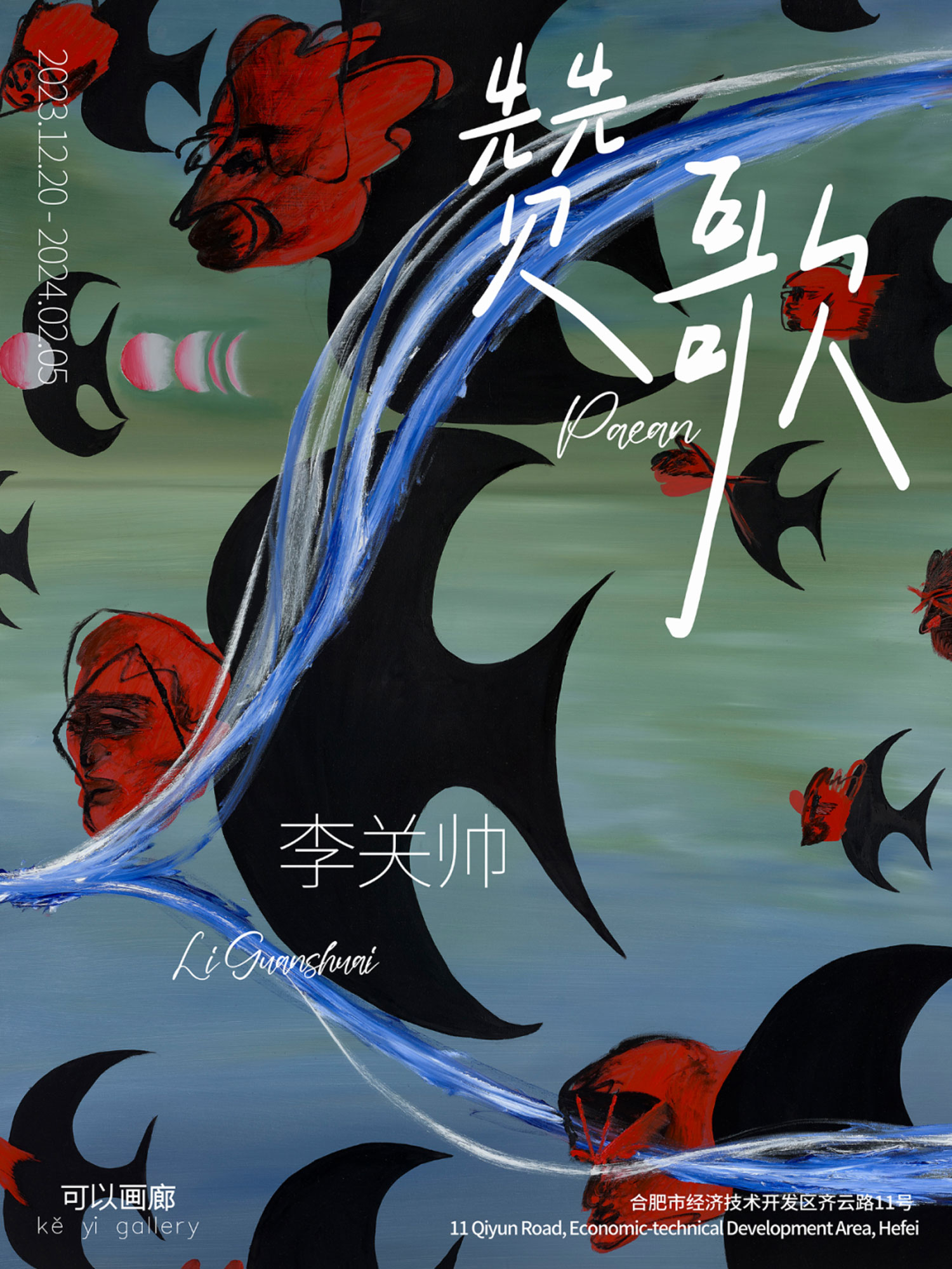展期 Period:
2023.12.20—2024.2.5
艺术家 Artist:
地点 Venue:
新闻稿 Press Release:
可以画廊欣然宣布将于12月20日在合肥空间举办艺术家李关帅个展「赞歌」,这是2023年度的收官之展。作为李关帅在本画廊的第一次个展,此次展览将精彩呈现艺术家的十余件新作。展览将持续至2024年2月5日。
李关帅致力于让自己的绘画作品能传达出当下人们对“神性”的复杂情绪,他试图通过绘画中的“仪式化”和“神化”的对象来反省对自身的信仰认知以及对外界的联想,笔触与形象之间的碰撞也显现出他内心中两者的博弈,合体、分裂、变形等处理将“神性”的情绪的迷思转换为由自身诞生的具有史诗感的形象。他的个人语言与他画中形象的“蜕皮”使得画面短暂的形象叙事中隐藏着他对自身不断更新变化的认知的新喜与旧爱。
“我们越来越多的人学会了避免被世上各种流窜的规则和意义所建造或被操控性的引导。随着这类认知的扩散,寻找自身的身份认同的人也多了,但恶心又迷人的是:刻意回避总是会让我们真正失去一些来自于自身的判断,在回避与迎接中来回地博弈过抵抗无疑才能产生人性的火花,这类曾经有点常见的火花在我脚下的这片大地上好像从来未如此弥足珍贵过,作品的态度也是如此。
人们信仰各类东西,表面来看各类信仰貌似都能使人变得纯粹,然而信仰这东西往往在人们体验与穿梭现实社会时插进来让其体验到神性所带来的奇妙敬畏与浪漫,教会了你抵抗却又带来新的摇摆与博弈,锻炼我们的意志。所以从艺术创作的角度,我开始作为一个被拉扯的对象,进入这种长期的体验:因着信仰认知的复杂性,所产生的我对神性和身份认知的博弈;作品精神性、和审美认知的游离。”
KeYi Gallery is pleased to announce that we will hold the solo exhibition "Paean" by artist Li Guanshuai at the Hefei Space on December 20, which is the final exhibition of 2023. As Li Guanshuai's first solo exhibition in KeYi gallery, this exhibition will present more than ten new works of the artist. The exhibition will run until February 5, 2024.
Li Guanshuai is dedicated to making his artworks convey the complex emotions people have towards "divinity" in the present time. He ritualizes and deifies characters from literature, movies, classical paintings, games, and so on through deformation. Processes like fusion, division, and transformation convert the myth of "divine" emotions into epic-like images born from his essence. Li Guanshuai's painting language notably intertwines with the inexpressible awe that humans harbour towards "epic," "ritual," and "monstrosity," while the "moulting of images" often conceals ancient tales of both new joys and old loves within the brief narrative of the canvas.
"More and more of us have learned to avoid being constructed or manipulated by the world's wandering rules and meanings. As this kind of recognition spreads, so searches for their own identity, but the disgusting and fascinating thing is this: deliberately avoiding will always make us lose some of our judgment. Only by playing back and forth with resistance between avoiding and greeting can we undoubtedly generate the spark of humanity. This kind of once-common spark seems to have never been so precious on this land under my feet, and so does the attitude of the work.
People believe in all kinds of things, and on the surface, all kinds of beliefs seem to make people pure. However, faith often intervenes in people's experience and shuttle through the real society, allowing them to experience the wonderful awe and romance brought by the divinity. It teaches you resistance but also brings new swings and games, and exercises our will. Therefore, from the perspective of artistic creation, I began to enter into this long-term experience as a pulled object: the game between my cognition of divinity and identity generated by the complexity of belief cognition; The dissociation of the spirit and aesthetic cognition of the work."

